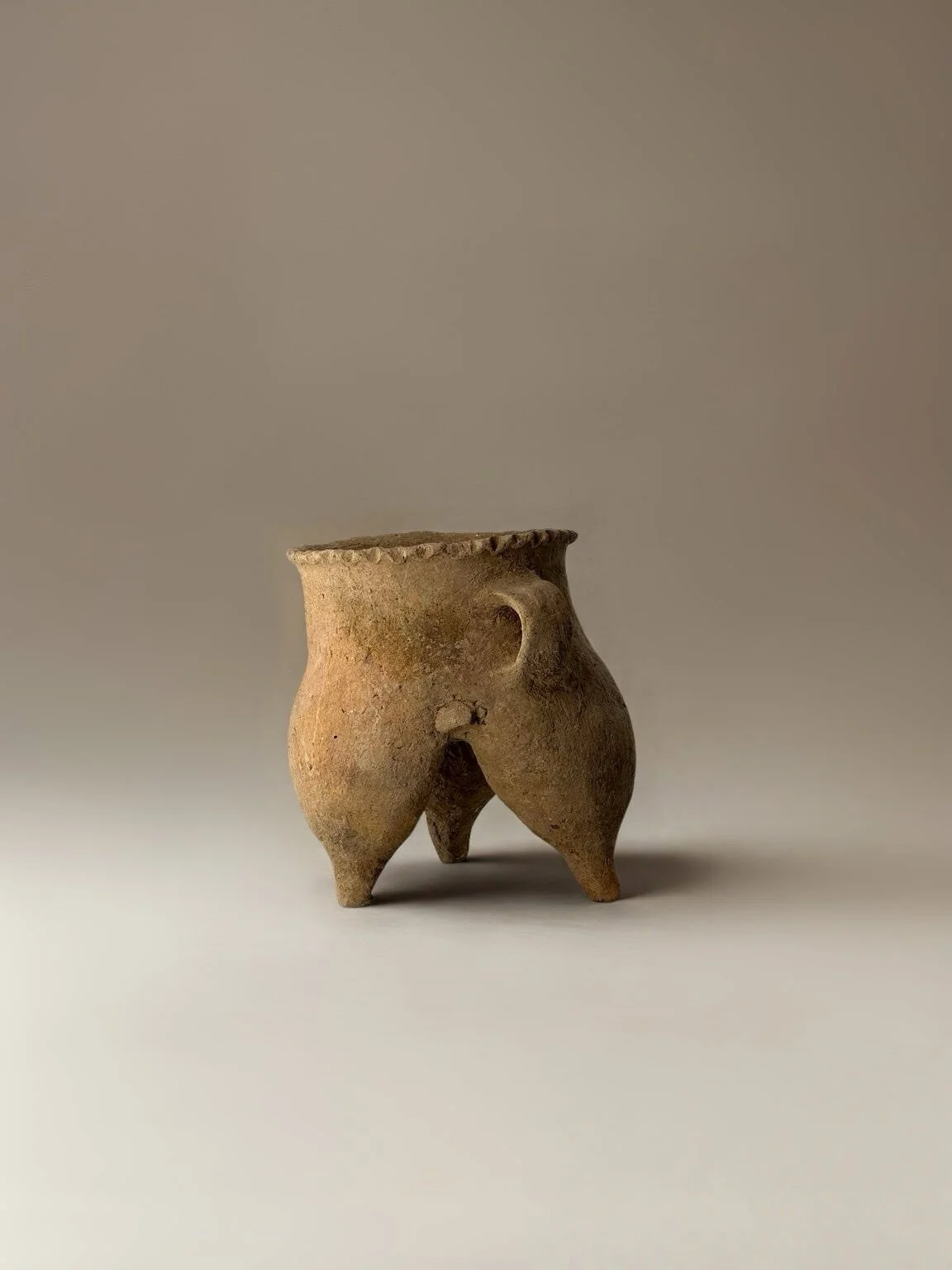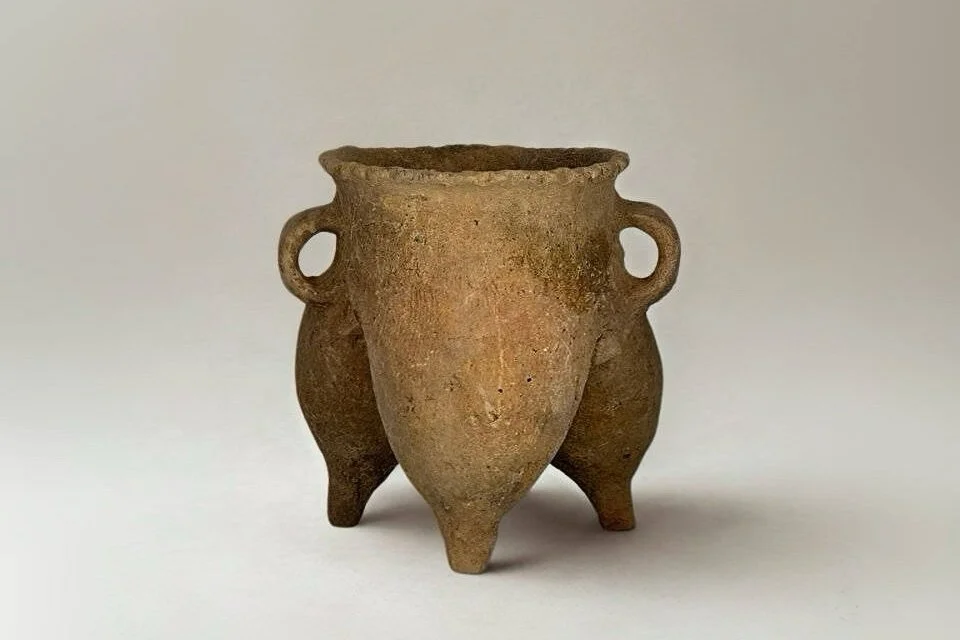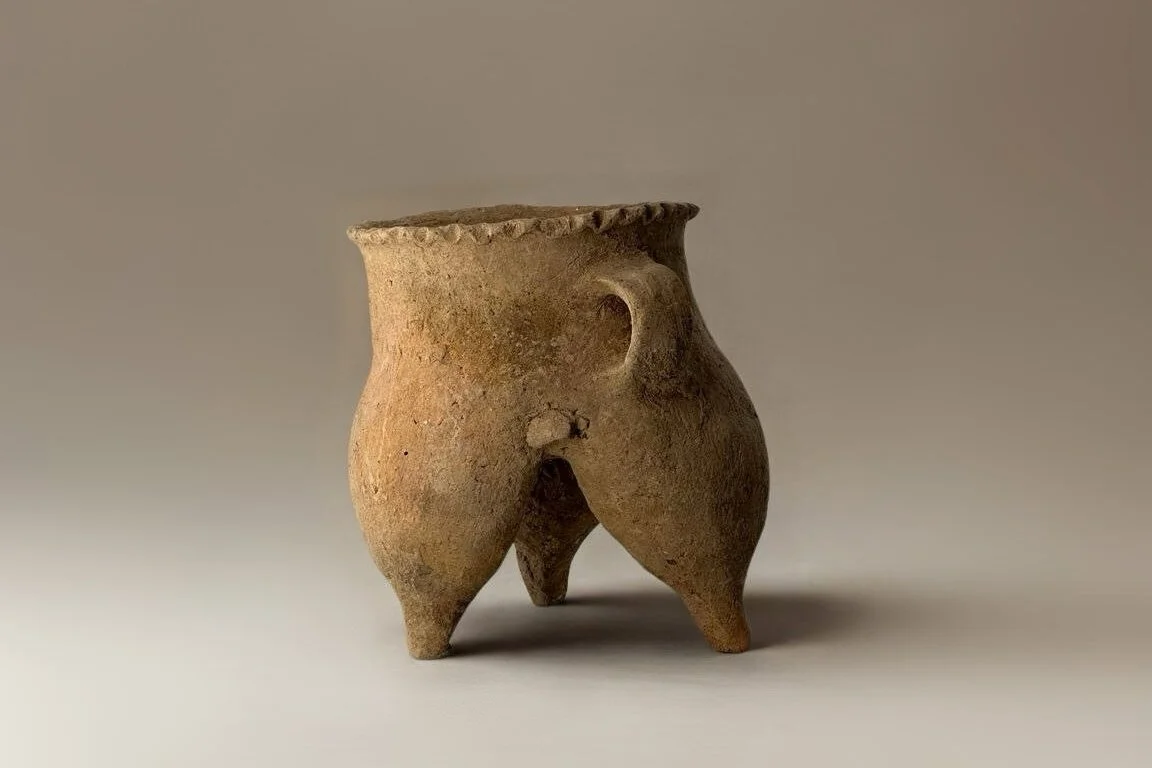 Image 1 of 3
Image 1 of 3

 Image 2 of 3
Image 2 of 3

 Image 3 of 3
Image 3 of 3




Neolithic Dawenkou Culture Tripod Vessel 新石器時代 大汶口文化 三足陶鬲
This robust and sculptural tripod vessel originates from the Neolithic Dawenkou culture (c. 4300–2500 BCE), an early agrarian society centred in today’s Shandong province. It is formed from coarse earthenware clay and supported by three evenly spaced pointed legs, a distinctive feature of Chinese Neolithic pottery linked to cooking and ceremonial use.
The form, known as a “li” (鬲), features a wide, open mouth and two small loop handles for practical handling. The upper rim is subtly decorated with impressed cord-marked patterns, lending texture and a sense of rhythm to the otherwise unglazed, naturally fired surface. Its unrefined, earthy appearance reflects the material honesty and cultural expression of early ceramic traditions.
This vessel illustrates the Dawenkou culture’s advancements in ceramic technology and aesthetic sensibility, marking a pivotal stage in the evolution of Chinese pottery from utilitarian to socially significant objects.
此件陶器出自新石器時代大汶口文化(約公元前4300年至前2500年),為早期中國東部農耕社會的重要實物見證。器身以粗陶製成,三足均勻分佈,穩固挺立,屬中國新石器時代常見之「鬲」形器,具實用與儀式雙重用途。
罐體寬口,兩側設有小耳,便於提攜。口沿以繩紋裝飾,質樸中帶有細節之美,器表未施釉彩,保留天然燒成的原始質感,展現早期陶器的素雅風貌與真實觸感。
此器不僅體現大汶口文化於陶器工藝上的創新突破,亦反映其社會生活與審美追求,為中國古代陶藝發展史上的重要例證。
Provenance|來源: Private English Collection|英國私人收藏
This robust and sculptural tripod vessel originates from the Neolithic Dawenkou culture (c. 4300–2500 BCE), an early agrarian society centred in today’s Shandong province. It is formed from coarse earthenware clay and supported by three evenly spaced pointed legs, a distinctive feature of Chinese Neolithic pottery linked to cooking and ceremonial use.
The form, known as a “li” (鬲), features a wide, open mouth and two small loop handles for practical handling. The upper rim is subtly decorated with impressed cord-marked patterns, lending texture and a sense of rhythm to the otherwise unglazed, naturally fired surface. Its unrefined, earthy appearance reflects the material honesty and cultural expression of early ceramic traditions.
This vessel illustrates the Dawenkou culture’s advancements in ceramic technology and aesthetic sensibility, marking a pivotal stage in the evolution of Chinese pottery from utilitarian to socially significant objects.
此件陶器出自新石器時代大汶口文化(約公元前4300年至前2500年),為早期中國東部農耕社會的重要實物見證。器身以粗陶製成,三足均勻分佈,穩固挺立,屬中國新石器時代常見之「鬲」形器,具實用與儀式雙重用途。
罐體寬口,兩側設有小耳,便於提攜。口沿以繩紋裝飾,質樸中帶有細節之美,器表未施釉彩,保留天然燒成的原始質感,展現早期陶器的素雅風貌與真實觸感。
此器不僅體現大汶口文化於陶器工藝上的創新突破,亦反映其社會生活與審美追求,為中國古代陶藝發展史上的重要例證。
Provenance|來源: Private English Collection|英國私人收藏